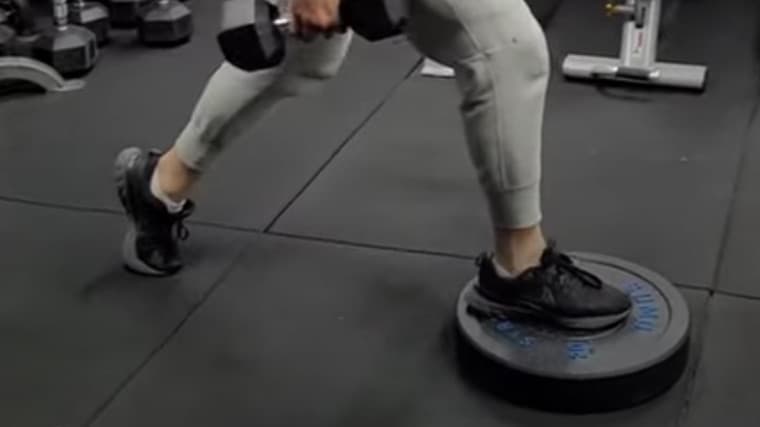
Top 3 Exercises To Relieve Knee Pain For Hiking Enthusiasts
By Daniel Kam Arke Fitness
Last update on Oct 26, 2024 · 3 min read
Top 3 Exercises To Relieve Knee Pain For Hiking Enthusiasts
Knee pain can be a hiker's worst enemy, turning an enjoyable trek through nature into a painful ordeal. Fortunately, incorporating the right exercises into your fitness routine can significantly reduce knee discomfort, increase stability, and strengthen the muscles that support your knees. Here are three highly effective exercises to alleviate knee pain and ensure that your hiking adventures remain pain-free.
Seated Good Mornings
Seated good mornings are an excellent exercise for stretching and strengthening the hamstrings and lower back while minimizing stress on the knees. These muscles play a crucial role in maintaining proper knee alignment and stability, especially during long hikes on uneven terrain.
How to Perform Seated Good Mornings:
- Starting Position: Sit on the edge of a sturdy chair or bench with your feet flat on the floor, about shoulder-width apart. Keep your back straight and your hands placed lightly behind your head or across your chest.
- The Movement: Inhale as you hinge in, bend forward gradually until you feel a stretch in your hamstrings, & strive to have your torso parallel to the ground. Your back should remain flat throughout the movement. Focus on pushing your hips backward as you lower your torso.
- Return: Exhale as you engage your hamstrings and lower back to return to the starting position, keeping the movement controlled.
- Repetitions: Perform 3-4 sets of 10-15 repetitions, 3-4 times a week.
Keep in mind:
- Avoid rounding your back as you bend forward.
- Start with a shallow range of motion, and gradually increase it as your flexibility improves.
- This exercise is low-impact and particularly good for warming up the posterior chain before a hike.
Single-Leg Deadlift
 Single-Leg Deadlift_Arke Fitness Centre TTDI
Single-Leg Deadlift_Arke Fitness Centre TTDIThe single-leg deadlift is a powerful exercise that targets the hamstrings, glutes, and stabilizing muscles around the knee. It also improves balance and coordination, which are essential for navigating rocky or uneven trails.
How to Perform Single-Leg Deadlifts:
- Starting Position: Stand on one leg with a slight bend in your knee. Hold a dumbbell or kettlebell in the opposite hand to the standing leg or keep your arms by your sides if you're new to the movement.
- The Movement: Hinge at the hips and extend your free leg straight behind you as you lower your torso toward the floor. The weight should move straight down in front of you, maintaining a slight bend in the standing knee. Your back should remain flat throughout the movement.
- Return: Engage your hamstrings and glutes to lift your torso back to the starting position, keeping your hips square to the ground.
- Repetitions: Perform 2–3 sets of 8–12 repetitions on each leg.
Tips for Success:
- Focus on keeping your movements slow and controlled, especially on the descent.
- Having trouble staying balanced? Try doing the exercise without weights, and don’t hesitate to hold onto a wall—it’s crucial for beginners to maintain stability.
- Ensure that your hips remain level; avoid letting one hip drop as you lower yourself.
 Credit: Iron Monk / YouTube
Credit: Iron Monk / YouTubeCredit: Iron Monk / YouTube
Front-Foot Elevated Split Squat
The front-foot elevated split squat is an excellent exercise for strengthening the quadriceps, glutes, and hip stabilizers. Elevating the front foot increases the range of motion, placing more emphasis on the muscles that support the knee.
How to Perform Front-Foot Elevated Split Squats:
- Starting Position: Stand in front of a low step or platform. Place your front foot on the elevated surface, and your back foot should be comfortably behind you, toes pointing forward.
- The Movement: Lower your back knee toward the ground by bending both knees, ensuring your torso remains upright. Your front knee should bend to about a 90-degree angle, and your back knee should hover just above the floor.
- Return: Push through the heel of your front foot to return to the starting position, engaging your glutes and quadriceps.
- Repetitions: Perform 2–3 sets of 10–12 repetitions on each leg.
Keep in mind:
- Focus on keeping your weight on the mid foot or at the ball of the foot.
- Keep your upper body straight and avoid leaning forward.
- Start with a lower platform for your back foot and gradually increase the height as you get stronger.
 Arke Fitness - Physiotherapy and Personal Training Centre in TTDI, Damansara
Arke Fitness - Physiotherapy and Personal Training Centre in TTDI, DamansaraIncorporating these three exercises into your regular fitness routine can help alleviate knee pain and prepare your body for the demands of hiking. Remember to focus on proper form and gradually increase the intensity as your strength and flexibility improve. At Arke Fitness, we’re here to support your journey with our expert team. Whether you’re looking for the top physiotherapy centre in TTDI or seeking personal training in KL, our dedicated professionals are here to guide you. With the best personal trainers in Damansara, we’ll ensure your fitness goals are met, pain-free and effectively. Ready to elevate your hiking experience? Reach out to us today!